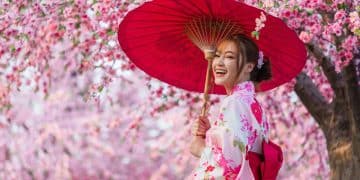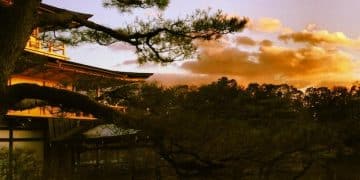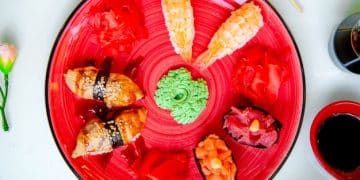Japan’s Festival Calendar 2025: A Guide for US Visitors
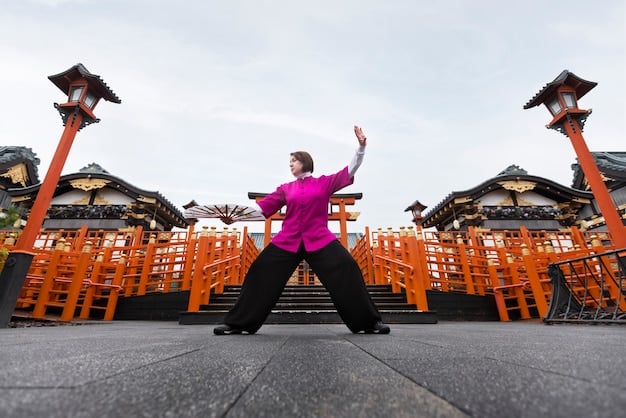
Japan’s Festival Calendar 2025: A Guide to Experiencing Local Culture for US Visitors offers a curated selection of Japan’s most vibrant and culturally rich festivals, providing US travelers with essential insights and tips for an unforgettable experience, including dates, locations, and cultural significance.
Planning a trip to Japan in 2025? Immerse yourself in the country’s rich culture by exploring its vibrant festivals. Our guide to Japan’s Festival Calendar 2025: A Guide to Experiencing Local Culture for US Visitors highlights the must-see events, ensuring an unforgettable cultural adventure.
Discover Japan’s Rich Cultural Heritage Through Festivals in 2025
Japan’s festivals, known as “matsuri,” are deeply rooted in the country’s history and traditions, offering a unique window into its culture. These celebrations often feature colorful parades, traditional music, local cuisine, and captivating performances. Experiencing a matsuri is an excellent way for US visitors to connect with Japanese people and immerse themselves in their customs.
From ancient rituals to modern interpretations, each festival has its own unique charm and significance. By exploring these events, you can gain a deeper understanding of Japan’s cultural heritage and create lasting memories.
Understanding the Significance of Matsuri
Matsuri are more than just lively events; they are integral to Japanese society and spirituality. Many festivals originated as religious ceremonies to honor deities, pray for good harvests, or ward off misfortune. Over time, they have evolved into community celebrations that strengthen social bonds and preserve cultural traditions.
Participating in a matsuri as a visitor allows you to witness firsthand the importance of these traditions and the sense of community they foster.
Tips for Attending a Japanese Festival
Attending a Japanese festival can be an exciting and rewarding experience, but it’s essential to be prepared. Here are some tips to help you make the most of your visit:
- Research the festival in advance: Learn about its history, customs, and any specific etiquette guidelines.
- Dress appropriately: While there’s no strict dress code, it’s generally respectful to avoid overly revealing clothing. Comfortable shoes are a must, as you’ll likely be doing a lot of walking.
- Be mindful of the crowds: Popular festivals can be crowded, so be patient and respectful of other attendees.
- Try the local food: Festivals are a great place to sample regional specialties and street food.
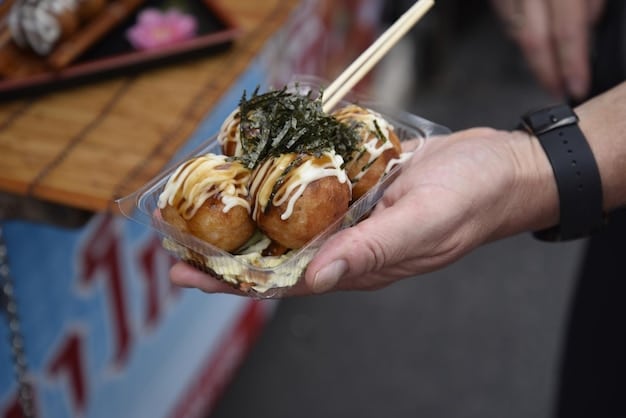
By following these tips, you can ensure a smooth and enjoyable festival experience, while also demonstrating respect for Japanese culture.
Japan’s festivals offer a captivating glimpse into the country’s rich cultural heritage. By understanding the significance of matsuri and following a few simple tips, you can have an unforgettable experience and create lasting memories of your trip.
January: Celebrating the New Year and Tradition
January in Japan is filled with celebrations centered around the New Year, known as “Shogatsu.” This is a time for families to come together, enjoy traditional foods, and participate in ancient customs. Experiencing Shogatsu provides a unique insight into Japanese culture and values.
While many businesses close for the first few days of January, numerous events and festivals take place throughout the month, offering visitors a chance to witness these time-honored traditions.
Key New Year’s Events
Several key events mark the New Year period in Japan:
- Hatsumode: The first shrine or temple visit of the year, where people pray for good fortune in the coming year.
- Otoso: A spiced sake traditionally drunk during New Year’s celebrations.
- Fukubukuro: “Lucky bags” sold by stores, containing a surprise assortment of items at a discounted price.
The Toka Ebisu Festival
One notable festival in January is the Toka Ebisu Festival, held at various Ebisu shrines across Japan. This festival honors Ebisu, the god of commerce and good fortune. Business owners and individuals visit the shrine to pray for prosperity in the coming year.
The festival is characterized by vibrant decorations, lively processions, and the sale of lucky bamboo branches adorned with charms and talismans.
January in Japan offers a captivating glimpse into the country’s traditions and customs surrounding the New Year. From visiting shrines to enjoying festive foods, experiencing Shogatsu is a memorable way to start the year.
April: Welcoming Spring with Cherry Blossoms Festivals
April in Japan is synonymous with cherry blossoms, or “sakura.” The blooming of these delicate flowers marks the arrival of spring and is celebrated with numerous festivals and events throughout the country. Witnessing the sakura season is a quintessential Japanese experience.
Hanami, the custom of enjoying the beauty of cherry blossoms, is a beloved tradition. People gather in parks and along rivers to picnic under the blooming trees, creating a festive and picturesque atmosphere.
Popular Cherry Blossom Viewing Spots
Some of the most popular cherry blossom viewing spots in Japan include:
- Ueno Park (Tokyo): A large park with over 1,000 cherry trees, offering a vibrant and bustling hanami experience.
- Shinjuku Gyoen National Garden (Tokyo): A serene garden with diverse cherry tree varieties, providing a more tranquil viewing experience.
- Philosopher’s Path (Kyoto): A scenic canal lined with cherry trees, creating a picturesque walking route.
Cherry Blossom Festivals Across Japan
Many cities and towns host cherry blossom festivals, featuring food stalls, stage performances, and illuminations of the blooming trees at night.
These festivals offer a festive atmosphere and a chance to immerse in the beauty of the sakura season.
April in Japan is a magical time to witness the beauty of cherry blossoms and participate in the festive hanami celebrations. Whether you’re strolling through a park or attending a local festival, the sakura season is an unforgettable experience.
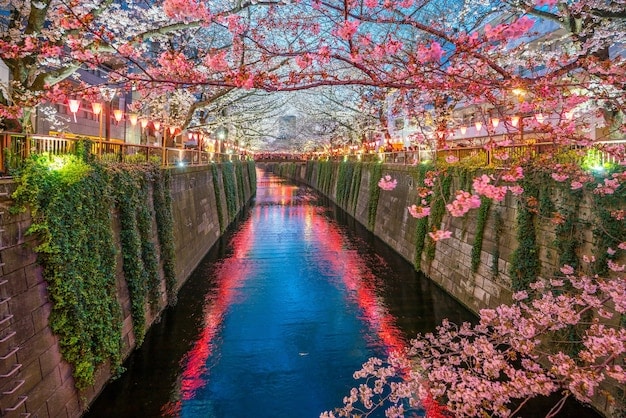
July: The Fiery Gion Matsuri in Kyoto
July in Kyoto is dominated by the Gion Matsuri, one of Japan’s most famous and elaborate festivals. This month-long celebration dates back over 1,100 years and is a testament to Kyoto’s rich cultural heritage. The Gion Matsuri offers a captivating spectacle of tradition, artistry, and community spirit.
The festival’s highlight is the Yamahoko Junko, a grand procession of elaborately decorated floats that parade through the city’s streets. These towering floats are adorned with intricate tapestries, carvings, and lanterns, showcasing the craftsmanship of Kyoto artisans.
Highlights of the Gion Matsuri
- Yamahoko Junko: The main procession of floats, held on July 17th and 24th.
- Yoiyama: The evenings leading up to the Yamahoko Junko, when the floats are displayed and the streets are lined with food stalls and traditional performances.
- Byobu Matsuri: During Yoiyama, some private residences open their doors to display valuable family heirlooms and folding screens, known as byobu.
The Gion Matsuri is a sensory feast, with the sights, sounds, and smells of traditional Kyoto filling the air. From the majestic floats to the lively street performances, the festival offers a unique glimpse into the city’s cultural heritage.
Experiencing the Gion Matsuri is an unforgettable journey through time, immersing you in the traditions and artistry of ancient Kyoto.
August: The Awa Odori Dance Festival
August in Tokushima Prefecture is the home of one of Japan’s most vibrant and energetic dance festivals: the Awa Odori. This four-day celebration draws dancers and spectators from across Japan and around the world, showcasing the unique rhythm and spirit of Tokushima.
The Awa Odori is characterized by its distinctive dance style, which involves simple yet captivating movements accompanied by traditional music. Dancers, grouped into teams called “ren,” parade through the streets, performing the Awa Odori to the cheers of the crowds.
Experiencing the Awa Odori
There are several ways to experience the Awa Odori:
- Watching the parades: Catch the daily parades as the ren dance through the streets, showcasing their skills and costumes.
- Learning the dance: Participate in Awa Odori workshops and learn the basic steps of the dance.
- Enjoying the atmosphere: Immerse yourself in the festive atmosphere, with food stalls, street performances, and the infectious energy of the crowds.
The Awa Odori is a celebration of movement, music, and community spirit. Whether you’re watching the parades or joining the dance, the festival offers a unique and unforgettable cultural experience.
Participating in the Awa Odori is a chance to connect with the people of Tokushima and experience the joy and energy of this traditional dance festival.
October: Autumn Festivals and Harvest Celebrations
October in Japan is a time for harvest festivals and autumn celebrations. As the leaves change color and the weather cools, communities across the country express gratitude for the year’s harvest and celebrate the bounty of nature. These festivals often feature traditional music, dance, and local cuisine.
Many harvest festivals are rooted in Shinto traditions, with rituals performed to thank the deities for a successful harvest and ensure continued prosperity in the coming year. These celebrations provide a glimpse into the spiritual connection between the Japanese people and the land.
Examples of Autumn Festivals
- Takayama Autumn Festival: A festival in Takayama, Gifu Prefecture, featuring elaborate floats, traditional music, and processions.
- Kurama Fire Festival: A fiery festival near Kyoto, where participants carry torches and parade through the streets.
- Niihama Taiko Festival: A festival in Niihama, Ehime Prefecture, featuring massive taiko drums pulled through the streets.
October in Japan offers a unique opportunity to experience the beauty of autumn foliage and participate in harvest festivals that celebrate the bounty of nature.
By attending these festivals, you can gain a deeper appreciation for Japanese culture and the importance of gratitude and community.
December: Preparing for the New Year
December in Japan is a month of preparation for the New Year. As the year draws to a close, people focus on cleaning their homes, settling debts, and preparing traditional New Year’s foods. While there aren’t as many large-scale festivals in December compared to other months, the month is still filled with unique cultural experiences.
One notable tradition is “Oosouji,” the annual cleaning of homes and businesses. This is a time for renewal and purification, ensuring a fresh start for the New Year.
Year-End Events and Traditions
Key events and traditions in December include:
- Oosouji: The annual year-end cleaning.
- Bonenkai: Year-end parties held by companies and organizations to celebrate the past year and strengthen bonds.
- Joyanokane: The ringing of temple bells 108 times on New Year’s Eve to cleanse the 108 earthly desires.
December in Japan offers a glimpse into the traditions and preparations leading up to the New Year. From cleaning to celebrating with colleagues, the month is filled with unique cultural experiences.
Witnessing these year-end customs is a chance to understand the importance of renewal and reflection in Japanese society.
| Key Point | Brief Description |
|---|---|
| 🎉 Matsuri Significance | Festivals are rooted in history, offering cultural insights. |
| 🌸 Sakura Season | April is famed for cherry blossom festivals and hanami. |
| 🏮 Gion Matsuri | Kyoto’s July festival features grand float processions. |
| 💃 Awa Odori | August’s energetic dance festival in Tokushima. |
Frequently Asked Questions
▼
A “matsuri” is a traditional Japanese festival, often rooted in Shinto or Buddhist religious ceremonies. They celebrate various aspects of Japanese culture, history, or specific deities, and are typically vibrant and community-focused events.
▼
Japan hosts festivals throughout the year, but spring (March-May) and autumn (September-November) are particularly popular due to the pleasant weather and beautiful scenery, coinciding with events like cherry blossom and harvest festivals.
▼
There’s no strict dress code, but modest and comfortable clothing is recommended. Avoid overly revealing attire. Comfortable footwear is essential, as you’ll likely be doing a lot of walking. Some festivals may have specific attire recommendations.
▼
Many festival dates are consistent year-to-year. Check official tourism websites for specific prefectures or cities closer to 2025 for precise dates. Local tourist information centers can also provide up-to-date schedules.
▼
Yes, most festivals welcome tourists and are generally very accessible. However, it’s helpful to learn some basic Japanese phrases and be mindful of local customs and etiquette to ensure a respectful and enjoyable experience for everyone.
Conclusion
Exploring Japan’s festival calendar in 2025 offers US visitors a unique opportunity to immerse themselves in the country’s rich culture and traditions. From the New Year celebrations in January to the autumn harvest festivals in October, each event provides a glimpse into the heart and soul of Japan. By planning ahead and embracing the local customs, travelers can create unforgettable memories and gain a deeper appreciation for this fascinating country.
